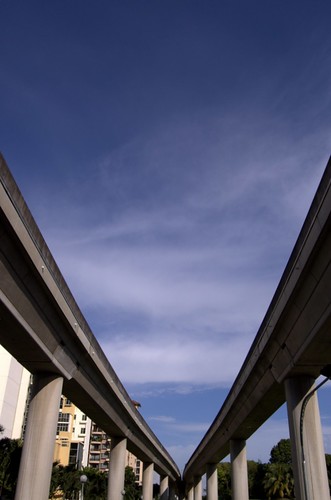Stoned, not all of mine go through post-process. I personally do pp work shots and selected personal shots. And I'd personally find shooting RAW just so to get past the crap shows how much further you've yet to go. Granted, RAW does give you more room to work with, especially in case you shoot crappily. But it should not mean that you shouldn't get your exposures right. If that is the case, you'd be making your expensive baby a Cannot-graphing toy, pun intended.
Blue skies can be obtained by a mix of careful thinking/planning and executing your shot. Some who'd mentioned the hours of the day, have given an example of what can help. Others may have suggested filters to enhance the depth of blue. Yet some may suggest that you tweak exposure/meter/etc. It lies in your mastery of shooting.
To bigu2fan - the wonderful sensor in the S3/S2 Pros can help give better, bluer skies. But it does not guarantee. I know of a S3 Pro user who spent 90% of his time with his S3 and got near-whites most of the time. Why? Because he got something wrong. Think about it, what could he have done wrongly. It was only after months of misses that he got the sky colours right. So there, the sensor does NOT determine.
To CreaXion - you want blue skies, well, everyone has given (some sensible, some less so, IMO) a lot of comments and ideas. Try them out. Shoot more. Learn. And more blue skies for you.
Out-of-camera blues, 6pm
Out-of-camera, but the sky was actually grey-cast, I used the sensor's tricks to get this, no pp, 8+am.






